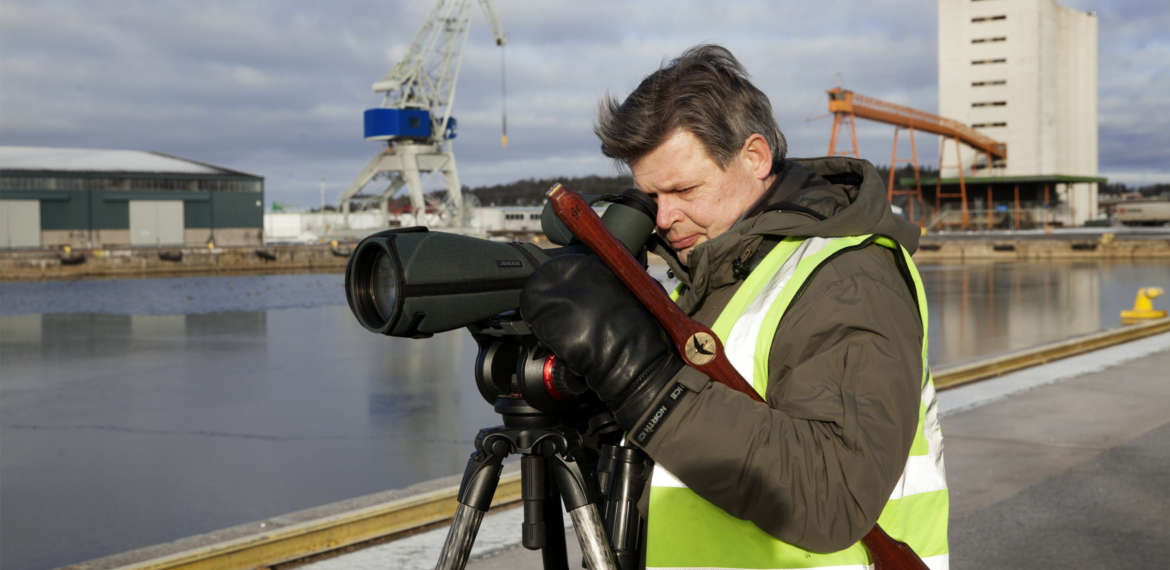On the trail of the sea eagle
You just have to believe your eyes. A sea eagle lands on the ice just outside the Port of Turku. Nature is truly close by.

Jukka Sillanpää knows the birds in the Port of Turku. When you take a walk with him, equipped with a telescope and binoculars, you can see the port from a new angle. Today, there are around 400 mallards swimming in the harbour basin, as Mr Sillanpää estimates. A flock of 80–90 jackdaws flies over. Mr Sillanpää estimates the number of birds with determination.
”There will be quite a panic when a goshawk arrives”, he points out. If you look carefully, you can often see a goshawk sitting at the top of a crane.
A goosander comes up from under water. A flying sea eagle can be seen with the telescope. It disappears briefly but then comes back in view. It has landed on the ice just next to the fairway.
Bird counting as a hobby
Jukka Sillanpää has walked the same route for bird counting every winter since 1983. He starts at Myllysilta bridge and follows the Aura riverbank and harbour quays all the way to the Ruissalo boat building yard. The total length of the route is 6.2 kilometres.
”This is specifically a hobby for me”, Mr Sillanpää says. As a daytime job, he works as an engineer at Sweco Rakennustekniikka Oy. The wintertime bird counting is part of nation-wide follow-up. There are hundreds of routes all over the country in Finland. You might easily think that an individual route is unique:
“What happens in Finland also happens in the Port of Turku”, Mr Sillanpää points out. In a normal winter, nearly all mallards of the region stay in the port area. The follow-up was in fact originally started to monitor the mallards that spend the winter there.
“This winter was mild, and only a tenth of the normal number of birds can be spotted in the port”, Mr Sillanpää says.
Port develops, local birds change
The port is a fascinating place for a birdwatcher: plenty of open water means lots of birds. 58 different species have been spotted there over the years.
”When the west wharf was still waste land, a horned lark and twite were spotted there.” One of the greatest finds is the Arctic redpoll. Previously the port area was open for everybody. Getting an access pass is not a problem now either, because the Port is also interested in the development of the bird situation.
“Sometimes we have seen oddballs such as a domestic goose and Muscovy duck. They had probably escaped from the Kupittaa bird park.”
“The number of small gulls and jackdaws has continuously decreased, while the number of seagulls and large gulls has multiplied.”
“A grey seal was really something”, Mr Sillanpää says about an exceptional observation during the latest counting. The average number of species spotted in bird counting is 18.9, and in the latest counting there were 25 species. The total number of birds varies a great deal, the average number in one counting is 2,080.
Once the winter bird counters were greeted by an impressive sight on the quays: “Usually sea eagles fly over the port, but this one had stopped to walk around on the quay.”
Text Sini Silvan
Photo Robert Seger
